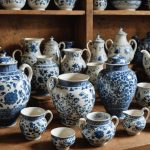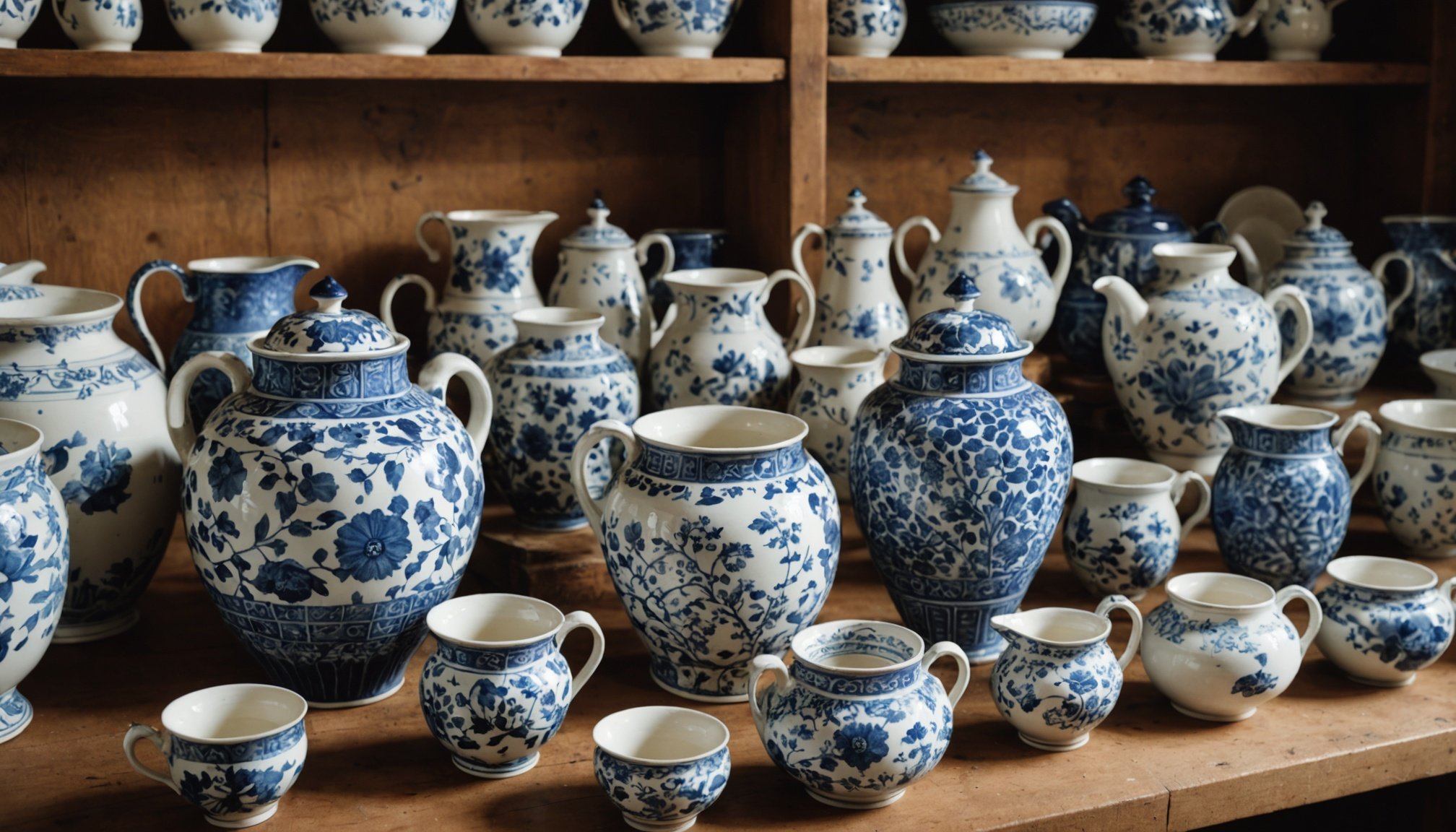Overview of British Ceramics
British ceramics boast a rich tapestry of history and cultural significance. Their origins trace back to the early ages, evolving distinctly across centuries. This evolution saw the rise of several key ceramic manufacturers who played pivotal roles in shaping British pottery.
The historical evolution of British ceramics was driven by both artistic innovation and technological advancements. Notable ceramic manufacturers, such as Wedgwood and Royal Doulton, are integral to this narrative. These trailblazers not only produced exquisite ceramics but also established standards that influenced global ceramic production.
Also to see : Journey Through Time: Your Ultimate Guide to Uncovering Northumberland’s Ancient Stone Carvings
The significance of British ceramics extends beyond aesthetics. Culturally, ceramics have been embedded in British life—used in royal ceremonies, everyday crockery, and as collectible art pieces. They often depict scenes that offer insights into the country’s heritage.
In addition, ceramics represent an intersection of art and utility, mirroring social and economic shifts. The craftsmanship involved in creating these items has been revered, marking ceramics as a symbol of British ingenuity.
Have you seen this : Explore Top Destinations to Experience Genuine UK Folk Music
Understanding the history and significance of British ceramics enhances appreciation for this multifaceted art form, acknowledging its enduring impact over time.
Notable Sites for British Ceramics
Embarking on a ceramic tour of Britain offers more than just aesthetic pleasure; it’s a passage through history. Stoke-on-Trent, often dubbed the “Pottery Capital,” stands as a symbolic beacon. Here, visitors can explore historic pottery towns, where heritage and craftsmanship converge.
Historic Pottery Towns
Stoke-on-Trent is a must-see for ceramic enthusiasts. Once home to several esteemed manufacturers, its legacy persists today. Key attractions include The Potteries Museum & Art Gallery, showcasing an extensive collection of Staffordshire ceramics. Unique experiences await, from factory tours illustrating traditional methods to hands-on workshops fostering appreciation for the craft.
Renowned Museums and Galleries
For those venturing beyond Stoke-on-Trent, renowned museums await across the UK. London’s Victoria & Albert Museum boasts a significant ceramic collection, while The Ashmolean Museum in Oxford presents a comprehensive history of British ceramics. Special exhibitions often provide fresh perspectives, featuring both historical pieces and contemporary works.
Workshops and Studio Tours
Interacting directly with artisans during workshops and studio tours offers a priceless glimpse into the art form. Encouraging participation, these experiences often include demonstrations that illuminate the intricate techniques craftsmen employ, enriching one’s understanding of British ceramics.
Enhancing Your Guided Tour Experience
Enhancing your guided tour experience involves thoughtful tour planning and creative engagement strategies. The first step is to create a well-organised schedule, incorporating diverse locations and activities. This approach ensures you cover significant ceramic sites, balancing historical depth with contemporary insights.
Effective tour planning also involves allocating time for spontaneous exploration. This allows visitors to engage deeply with ceramics, fostering personal connections with the art form. Including interactive elements, such as workshops, enriches the experience further.
To boost engagement, use storytelling techniques during the tour. Highlighting unique historical anecdotes about British ceramics captivates visitors, making the narrative come alive. Incorporating visual aids, like images of iconic ceramic pieces, helps illustrate key points and enhances understanding.
Consider utilising audio guides or mobile apps with expert commentary. These resources offer insights directly from historians and artists, adding depth to your tour. They also allow visitors to explore at their own pace, catering to various learning styles.
Ultimately, a well-planned tour that combines education, interaction, and personal stories fosters a meaningful connection to the history and significance of British ceramics.
Expert Insights on Ceramics
Exploring ceramics through the lens of expert commentary enriches understanding beyond surface appearances. Interviews with established ceramic artists reveal first-hand insights into artistic motivations and challenges faced in the industry. These conversations often highlight how traditional techniques are preserved while incorporating innovative methods.
Historians offer a lens into the historical evolution of British ceramics, providing context and depth to the art’s development over centuries. This expert analysis sheds light on pivotal moments that shaped ceramic styles and manufacturing processes. Listening to these experts brings clarity to terminology and practices that might otherwise remain obscure.
Perspectives on current trends in ceramics provide a glimpse into the evolving landscape of this art form. As trends shift, a fusion of classic styles with contemporary influences can be observed. These insights offer fresh perspectives on the future direction of ceramics and underscore its ability to adapt to cultural shifts.
Engaging with expert commentary and analysis enhances the appreciation of ceramics, transforming viewing into a more informed, enriched experience. With each insight, spectators, enthusiasts, and novices alike gain a deeper, more nuanced grasp of British ceramics.
Personal Anecdotes and Experiences
Exploring British ceramics through personal stories transforms a factual journey into an emotive experience. Each guided tour reveals hidden narratives that resonate with visitors, making the history feel personal. One memorable interaction often recounted involves a ceramist in Stoke-on-Trent who shared his family’s generational link to this historic craft. These interactions forge a connection, highlighting the human aspect in ceramic tours.
Individuals recount moments of awe during tours at the Victoria & Albert Museum, where holding a Royal Doulton piece evoked a deep appreciation for its craftsmanship. The tactile experience complements visual observation, creating unforgettable memories that deepen one’s understanding and appreciation of British ceramics.
Reflections on tours often spotlight how these excursions blend art with history. Participants ponder aloud about the role of ceramics in British culture, noticing parallels to their heritage. Watching artisans at work during workshops sparks creative inspiration, leaving many visitors eager to explore more ceramic sites.
These personal journeys illuminate British ceramics’ enduring impact. From quiet reflections to spirited discussions with fellow enthusiasts, these experiences enrich the overall appreciation by providing a personal lens on history and craftsmanship.











